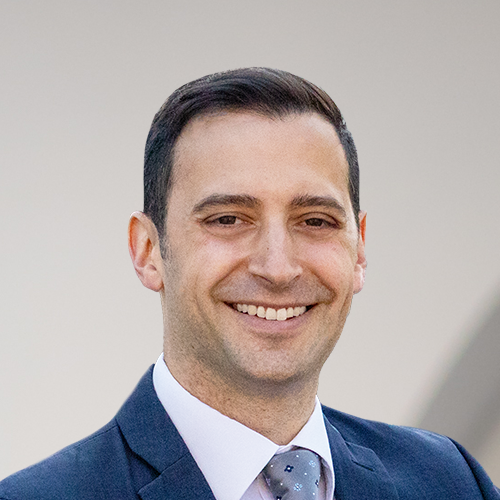
On Monday, January 10th, the U.S. Supreme Court heard oral arguments in Gallardo v. Marstiller, on appeal from the 11th Circuit’s decision in Gallardo v. Dudek, 963 F.3d 1167 (11th Cir. 2020).
The central issue here is the extent of the state Medicaid agency’s right to place a lien for medical expenses on a Medicaid recipient’s personal injury recovery. Specifically, whether it is entitled to place a lien on the portion of the settlement that represents compensation for past medicals; or whether it can also satisfy its lien from the portion of the settlement that represents compensation for future medical expenses. The merits of the argument are hyper-technical, and rest upon a reading of several provisions of the Medicaid statute, most notably 42 U.S.C. §§ 1396a(25)(H) and 1396k.
But the ramifications of a potential decision here that would uphold the 11th Circuit’s decision allowing collection of the Medicaid lien from both the past and future medical components of the case are potentially far-reaching, and would substantially increase Medicaid’s ability to collect in some cases.
Of course, it is difficult to predict how the Court will rule based solely on oral argument. But here are our impressions of the proceedings.
Justices Breyer, Kagan, and Sotomayor got into the most substantive discussion about the merits of the case. Justice Breyer mentioned that the whole system is one that was created for the benefit of those who need it, i.e., the Medicaid recipients:
“[B]ecause we have a system that says don’t take any of their money. Then it says take some of the money for the past stuff you paid, but take it only from, they have money coming from a future guy, a victim, a tortfeasor for that, and then you have something say take an assignment. So it seems to me you’re asking us to read these two provisions, higgledy-piggledy, slightly in conflict –if not direct conflict, at least hard to make consistent –and they’re asking you, the government, to read them consistently with the whole spirit of the thing, which is leave the money with the Medicaid victim.”
Justice Sotomayor addressed the question directly to the Florida Attorney General, of why sue for medical expenses at all if Medicaid is involved.
“JUSTICE SOTOMAYOR: Does a beneficiary have to sue at all for past –I don’t see anywhere in here there’s an assignment to the state, there’s a subrogation by the state, but why should Medi –why should any of the recipients bother to sue for what you’re going to be paid - . . . if you’re going to take it all anyway?”
There really wasn’t much of an answer to this question. The implication here is a point that was brought up a couple of times throughout the course of the arguments, i.e., why doesn’t Medicaid actively protect its right to payment for medicals by becoming directly involved in the litigation and exercising a right of subrogation.
Chief Justice Roberts was silent for the majority of the proceedings; but tellingly this was his only question:
“CHIEF JUSTICE ROBERTS: Counsel, does the state ever participate in the underlying litigation that gives rise to the judgment or the settlement?
WHITAKER: Well, certainly, Florida’s statute allows us that authority. In terms of our practice right now, my understanding is that we don’t do that, just -just because it’s not cost-effective for it to do it that way, for us to –
CHIEF JUSTICE ROBERTS: Well, maybe not in every one, but if you have sort of ones where the amounts will be significant, that would avoid the allocation hearings after the fact, and you could address those things in the structuring of the –of the settlement or the judgment, right?”
The answer was that the State does not take part in the underlying litigation, even in the largest cases. Because obviously it is much easier for them to do nothing and assert a lien.
Meanwhile, Justices Thomas, Gorsuch, and Barrett’s concerns were largely related to ancillary issues and not the merits of the actual arguments being made. And so it is difficult to determine whether they leaned one way or the other. Justice Alito was largely silent, and chimed in only once.
Finally, Justice Kavanaugh expressed concern with Medicaid spending, which in my opinion might as well be an overt declaration of intent to rule for the State of Florida. Indeed, the Florida Attorney General in his first sentence to the Court made that plea to any fiscally conservative members of the Court, stating: “To help keep Medicaid solvent, Congress made Medicaid the payer of last resort, meaning that other available resources should pay medical expenses before Medicaid pays.” Moreover, Justice Kavanaugh seemed to suggest that, if there is a discrepancy between provisions of the Medicaid statutes, the Court could look to the Medicare statute for guidance, which also doesn’t bode well for Ms. Gallardo.
Another interesting face was the federal government’s participation in this case. The United States appeared as amicus supporting the Petitioner Ms. Gallardo. Attorney Vivek Suri of the Solicitor General’s office argued, and I think boiled down the issue well into a few sentences. This is while discussing the issue of the state enforcing its right to medicals by actively participating in the underlying litigation, he argues:
“But what the state is doing here is it’s not going after the tortfeasor. It’s going after the victim of the accident, and it’s seeking funds that don’t correspond to the things it paid for.”
We think that’s exactly what the anti-lien clause prevents the state from doing.
Ironically, the federal government, which is charged with enforcing the federal Medicaid Act, believed that Florida was in noncompliance with the federal Medicaid laws. Regardless, the federal government believed the proper remedy here was not to cut off Florida and fellow Floridian Medicaid recipients from federal funding for Florida’s noncompliance; but, rather, that it join the plaintiff in asking the United States Supreme Court to rule in Ms. Gallardo’s favor.
In all, it was an interesting discussion between the Justices and attorneys, but difficult to determine where several of the Justices stand on the merits.
We will continue to monitor this case for a decision, and will provide an update as soon as one is issued. In the meantime, Precision Resolution will continue to attack Medicaid liens utilizing the more restrictive interpretation that formed the basis of the Ahlborn decision, as well as our numerous other arguments that we use on a local level. Stay tuned.


